The ancient Lycians remain one of antiquity’s most mysterious civilisations, with limited historical records preserving their legacy. However, the discoveries made so far reveal a fascinating culture, distinct from the rest of the ancient world. One of the most remarkable aspects of Lycian society is its unique funerary traditions.
Perched on the mountainsides overlooking Fethiye, the awe-inspiring Lycian Rock Tombs stand as a testament to their beliefs and craftsmanship. These elaborate structures, carved directly into the cliffs, resemble grand entrances leading into the heart of the mountain. In reality, they serve as the final resting places for the honoured dead, reflecting the Lycians’ reverence for their ancestors and their vision of the afterlife.
The Tomb of Amyntas
The most remarkable of these tombs was constructed by the Lycians in 350 BC. It is named after the Greek inscription etched onto its facade, which reads “Amyntou tou Ermagiou”, translating to “Amyntas, son of Hermagios” in English.
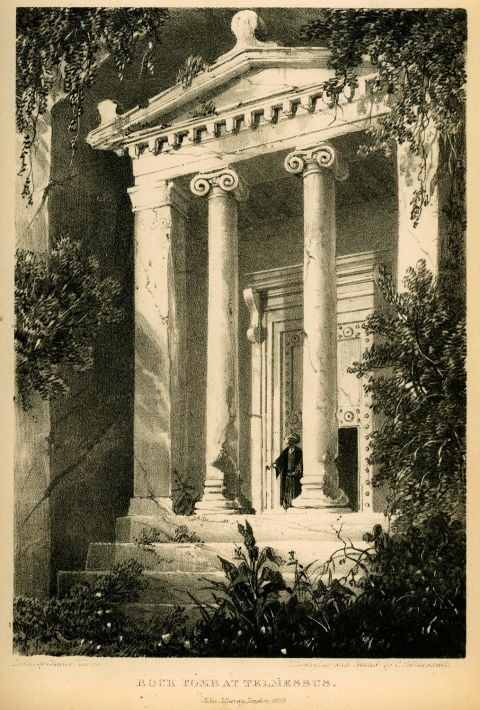
What sets the Tomb of Amyntas apart is its impressive interior size. Unlike many other rock-cut tombs, which tend to be relatively small, this one boasts a vast chamber with dimensions comparable to a full-sized temple, highlighting the Lycians’ extraordinary craftsmanship and architectural ambition.

Tomb of Amyntas in the 21st Century
oday, the Tomb of Amyntas overlooks a very different Fethiye from the one that existed in 350 BC. While the landscape remains breathtakingly beautiful, the ancient Lycians would undoubtedly notice a few changes.
Visitors can either admire the tomb from a distance or pay a small entrance fee to climb the 200 steps for a closer look. The effort is well worth it—sitting on the grand steps of this iconic monument, taking in the stunning views, and reflecting on the legacy of Hermagios’ son is a truly unforgettable experience.
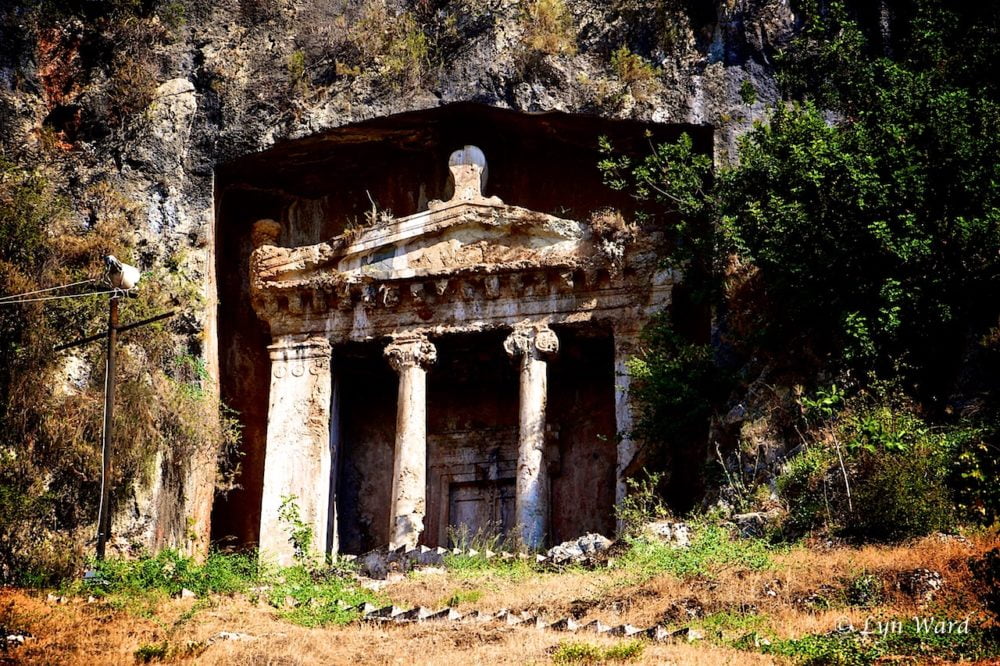
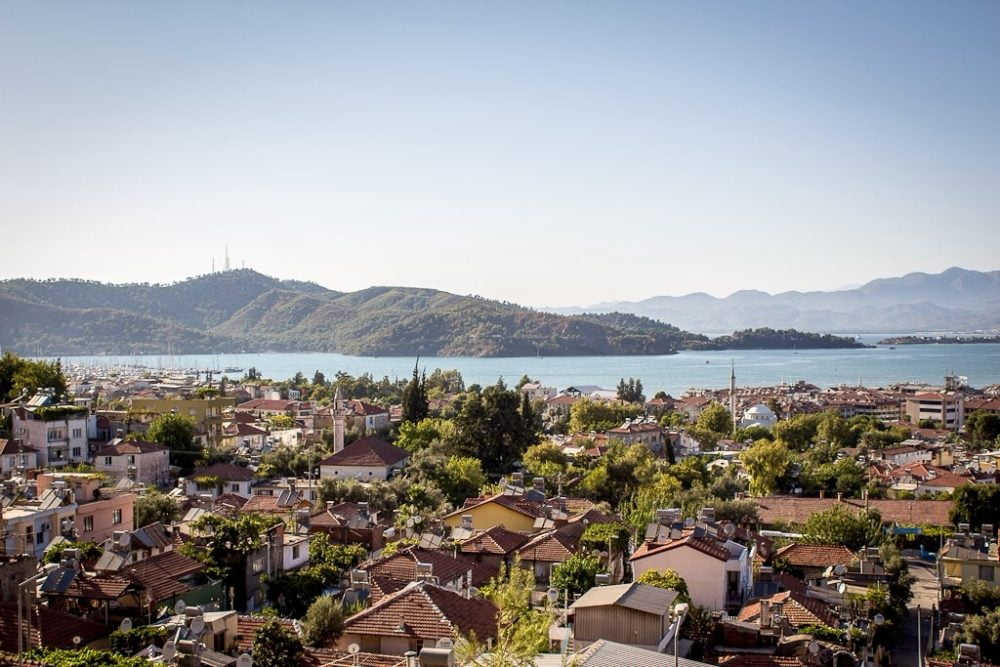
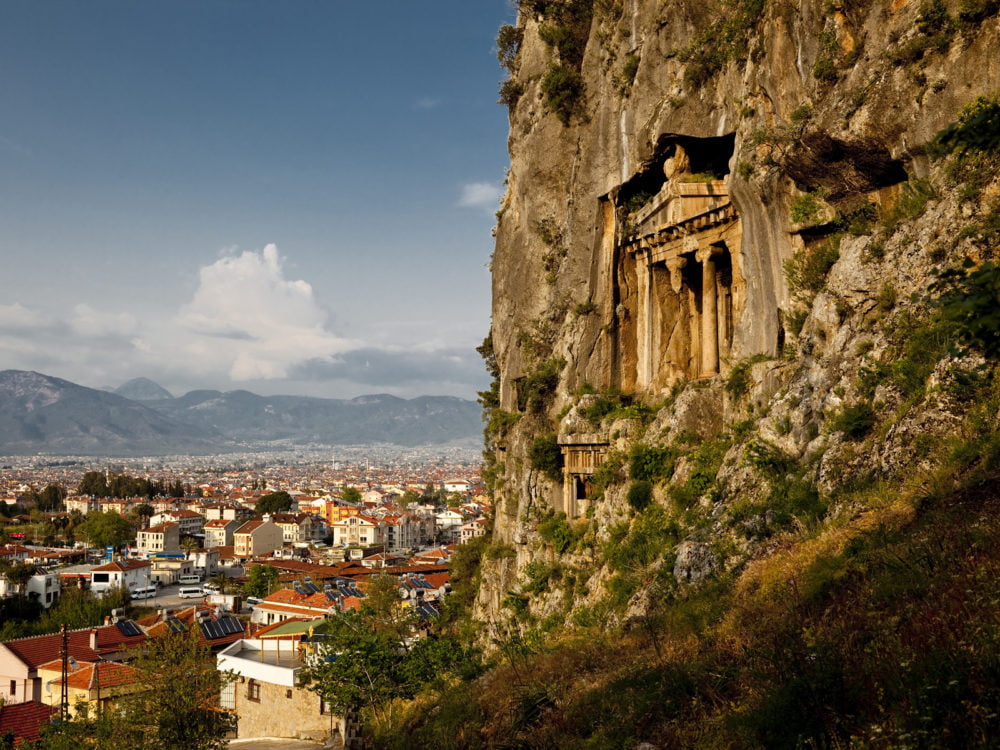
Lycian Rock Tombs: A Glimpse into an Ancient Belief
The Lycians held a unique belief that their dead were carried to the afterlife by magical winged creatures. To aid this journey, they placed their honoured deceased in elevated locations, such as the cliffsides overlooking their lands.
Dating back to the 4th century BC, Lycian rock tombs are the most numerous and visually striking of all Lycian burial types. In some areas, the sheer number of tombs is so vast that entire hillsides appear honeycombed with them.
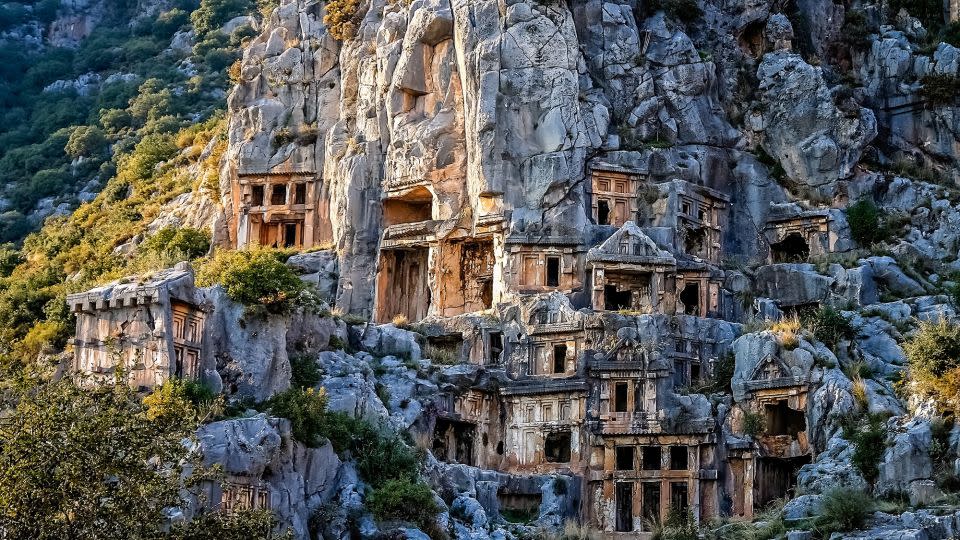
The earliest tombs were little more than simple cavities carved into the rock. While their exteriors are often grand and intricately designed to resemble the façades of temples or houses, the interiors are surprisingly modest—plain chambers cut into the stone, with only a single monolithic platform to display the body. Centuries of looting have left these tombs mostly empty, but their imposing presence endures.
Though much about the Lycians remains a mystery, one thing is certain: they ensured their dead would rest in magnificent locations, with a breathtaking view for all eternity.
This article was first published on 4 October 2018 and updated on 3 February 2025








